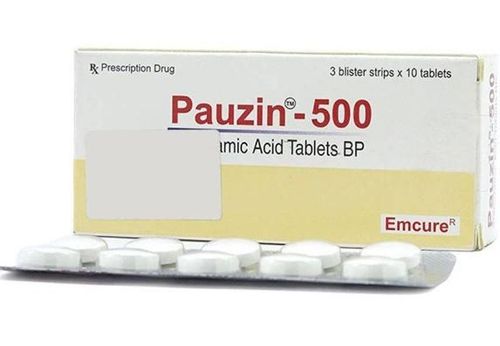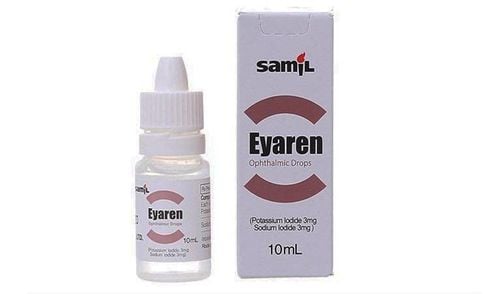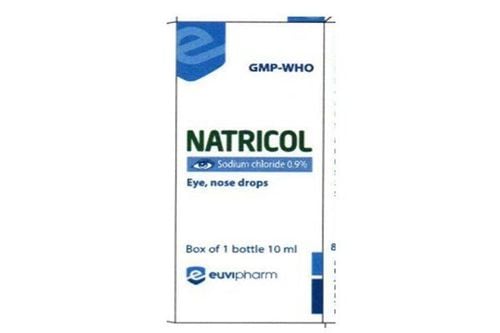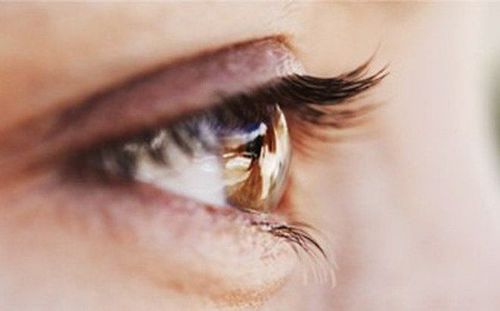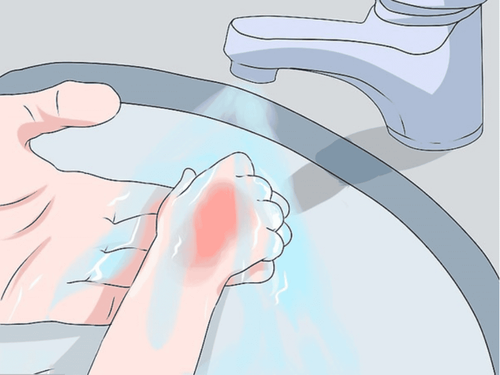This is an automatically translated article.
The article is professionally consulted by Master, Doctor Hoang Thanh Nga - Department of Medical Examination and Internal Medicine - Vinmec Ha Long International Hospital.Trachoma is one of the causes of vision loss. The disease is caused by bacteria, so it can develop and spread into an epidemic. Early recognition of the signs of the disease and proper early treatment is the best way to avoid complications caused by the disease.
1. Frequency of illness
According to statistics in recent years, eye burns are common in men (accounting for 85%), especially in the working age group from 18-55 years old (accounting for 49%). Children and students also account for a significant proportion of 30%. Of the cases of eye burns, 78% of the patients lived in rural areas.
2. Causes of eye burns
There are many types of agents that can cause eye damage:
2.1. Chemical eye burns
Signs of chemical eye burns are very diverse, depending on the concentration of the chemical that causes the burn, the time from being burned to being taken to the hospital, and the initial first aid treatment at the scene.
In chemical eye burns, the most common burning agents are: sulfuric acid, Nitric acid.... Bases are also capable of causing burns to the eyes such as: caustic soda, ammonia, lime... There are also possible lime burns, benzene burns, chemical burns when experimenting...
Accidental burns of eyes caused by chemical acids are common in industry, in battery manufacturing, metal plating, and laboratories. , activities or intentionally splashed acid in the eyes by others.
Base burns are common among workers in aluminum manufacturing or soap making facilities. Lime burns are common in the construction industry or in daily life. Eye burns from benzene can occur in rubber manufacturing facilities.
Characteristics of damage from chemical eye burns is that the blood vessels in the conjunctiva in the marginal area are often blocked, causing corneal nutrition disorders, making the cornea difficult to recover. Chemical burns are usually very serious due to some kind of chemical reaction.

Bỏng mắt xảy ra có thể do hóa chất
2.2. Eye burns caused by ultraviolet rays
Ultraviolet rays, also known as ultraviolet rays, are abundant in beaches, on snowy mountains. Ultraviolet rays are emitted from arc light and even from some lamps used for stage lighting.
When the eyes are exposed to a large amount of ultraviolet rays and lasts for about 2 - 6 hours continuously, the patient will see intense pain in both eyes, a lot of tears, glare, and feel afraid of light, so they won't open it. be eye. On examination, the corneal lesions are often shallow, eyelids twitch, fluorescein is densely colored, but no damage to the fundus is found.
Treat eye burns caused by ultraviolet rays by applying a topical anesthetic every 5 minutes until the patient opens his or her eyes naturally, then cover the eye with antibiotic ointment, rest the eye, and avoid contact with any symptoms. Corneal tissue regenerates completely 24 hours.
2.3. Laser eye burns
Laser is essentially a monochromatic beam of energy, capable of penetrating transparent media and penetrating non-pigmented tissues. When reaching the retinal pigment epithelium, the laser will be absorbed, the light energy will be converted into heat, causing burns, coagulation of proteins in the cells and cell death. Characteristic damage is that fibrous cells will grow to replace dead cells and leave scar tissue, causing irreversible retinal burns.
In addition, when we look at the sun for a long time, especially on the occasion of a solar eclipse, the eyes will absorb a large amount of light rays with energy, resulting in darkening of the eyes, a lot of tears, and a visible area. The central retina is swollen, thickened, and eventually damaged and scarred.
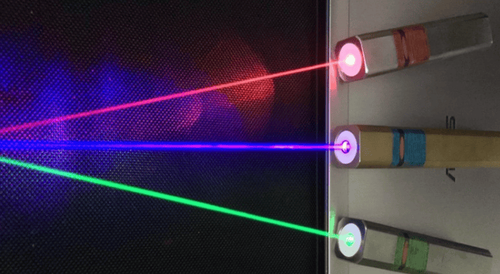
Bỏng mắt do tia laser
2.4. Eye burns due to ionizing radiation
Eye burns caused by G-rays, X-rays in patients receiving radiation therapy for maxillofacial tumors, victims of nuclear explosions or radioactive leaks from nuclear power plant reactors. This type of eye injury is often very severe, the cornea is dry and smooth, and the corneal regeneration is destroyed by radiation.
Then, the superinfection will cause necrosis and perforation of the cornea, leading to infection of the intraocular tissues. Characteristic injury caused by ionizing radiation often leads to removal of the eyeball.
3. Classification of eye burns
Burns can occur only on the eyelids, but can also occur in the conjunctiva and sclera, cornea and periphery. Classification of burns to the naked eye will be according to the width - narrow, shallow - deep and the location of the burn:
Mild burns of the first degree: eyelid swelling only on the skin, with/without conjunctival edema, corneal lesions and the margin of the eye, if present, is only in the epithelium. Second degree burns: eyelids may appear bulging, conjunctiva with pseudomembranous membranes, and cornea sometimes with opaque opacity. Burns degree III and IV: is the degree of severe burns, there is burning of the skin, skin necrosis, in the conjunctiva and sclera there may be necrosis, in the cornea and fringe area there is a shallow/deep opacity less than 1/ 2 areas. Very severe burns grade V: necrosis, black eyelid skin, burning both muscle and eyelid cartilage with a size greater than 1/2 of the area, necrosis in the sclera and conjunctiva, cornea and superficial opaque fringes or more than 1/2 the area deep.
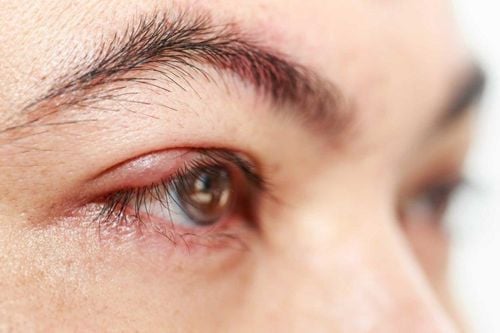
Bỏng mắt xảy ra ở mi mắt
4. Symptoms of eye burns
When the burn is mild, the patient will feel irritated eyes, conjunctival swelling, corneal edema and a little loss of vision. When the burn is severe, the eyes will show a lot of pain, conjunctival edema, vascular occlusion, white necrotic spots and no blood vessels.
The cornea is opaque white, the posterior part of the cornea is not visible, the epithelium is peeled, the parenchyma is cloudy and edematous, the corneal ulcer progresses persistently leading to corneal perforation, the vision is sharply reduced, making the patient can only distinguish light.

Mắt đau nhức là biểu hiện của bệnh bỏng mắt
5. Treatment of eye burns
After first aid, the patient's eye pH is measured immediately and continues to wash the eye with isotonic solution until the eye's pH is 7. If the damage penetrates deeply, rinse the eye continuously by instilling drops into the eye through the infusion system and wash the tear ducts to avoid future adhesions. Anti-inflammatory: Inflammation increases enzymes that destroy collagen and wrinkles the cornea. The most commonly used anti-inflammatory drugs are systemic and topical corticosteroids, especially in the first 10 days, and then replaced with non-steroids. Atropin 1% also contributes to pain relief, anti-inflammatory and anti-adhesive. Corneal necrosis: necrosis occurs from 7 to 21 days after the burn due to proteolytic enzymes, so it is necessary to take measures to inhibit this enzyme. Fight infection by disinfecting the whole body and in place. Tetracycline antibiotic has both antibacterial effect and inhibits collagenase enzyme (enzyme that destroys collagen). Prevention of eyeball adhesions by applying antibiotic ointment on the same upper and lower items, rubbing the eyes several times on the 2nd - 3rd day after the burn, however, in special severe burns, the doctor accepts blepharospasm to increase the source of nutrition. maintenance for pre-sale. Strengthening the conjunctival conjunctival nutrition: apply the eyes with preparations containing vitamins A, B, C or inject autologous serum under the conjunctiva, supplement with a diet rich in protein and vitamins, drink plenty of water.... Painkillers or local and systemic sedation Psychotherapy, patient comfort and encouragement. In severe burns, emergency surgery may be indicated.
With 10 years of experience in the field of Ophthalmology, she used to work at Thai Nguyen Central Hospital and held the position of deputy head of the department and in charge of the Department of Ophthalmology at Thai Nguyen University of Medicine and Pharmacy. Master Hoang Thanh Nga has a lot of experience in the field of examination and treatment of eye diseases. Currently, as an Ophthalmologist of General Internal Medicine, Vinmec Ha Long International General Hospital
For examination and treatment at Vinmec, please come directly to Vinmec health system or register for an online examination HERE.




